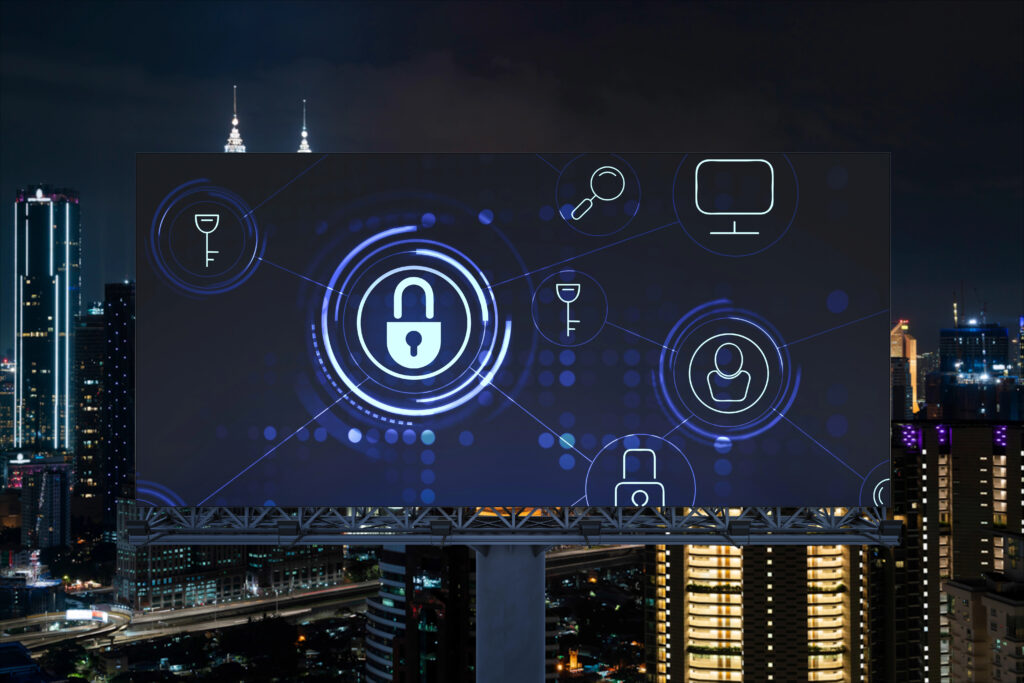As digital transformation accelerates, so does the risk of cyber threats. With Asia at the epicenter of technological change, Asian tech firms are uniquely positioned to develop cutting-edge cybersecurity technologies to address critical vulnerabilities in business and government infrastructures. In this article, we explore some of the latest cybersecurity innovations emerging from Asia, including AI-powered threat detection and blockchain-enabled secure transactions. We learn how these new solutions aim to defend against the growing tide of digital threats the region faces. By adopting a proactive approach focused on next-generation cybersecurity, Asian nations seek to protect themselves while cementing their leadership in technological advancement.
The Rising Threat of Cyber Attacks in Asia
According to recent reports, Asia has the highest number of cyber-attacks globally, with over 4.41 billion incidents in 2020 alone. And so, State-Sponsored Attacks Government agencies and critical infrastructure are frequent targets of state-sponsored cyber-attacks in Asia. Chinese and North Korean state actors have allegedly targeted government networks in South Korea, Japan, and Taiwan to steal classified information. These attacks pose severe threats to national security and governance.
Financial Fraud and Scams
- The rapid growth of e-commerce and digital payments in Asia has led to increasing financial cyber-crimes. Online scams and fraud cost Asia $10.3 billion in 2020. Phishing emails, malware, and ransomware are commonly used to steal banking credentials, credit card numbers, and cryptocurrency wallets.
Lack of Cybersecurity Expertise
- While cyber threats are rising rapidly, Asia faces a severe shortage of cybersecurity professionals. According to surveys, over 2.14 million cybersecurity jobs remain unfilled in Asia. Most countries lack cybersecurity frameworks, education, and skills training programs. Building a skilled cybersecurity workforce is critical to improving cyber resilience in both public and private sectors across Asia.
Hence why, to defend against these threats Asian governments and tech companies are investing heavily in cybersecurity innovations. Singapore, Japan, and South Korea are establishing advanced cyberdefense systems and promoting cybersecurity education. Chinese tech giants like Alibaba and Tencent are developing AI-based threat detection tools. Despite these efforts, more work is needed to strengthen cybersecurity and protect Asia’s rapid digital transformation. Constant collaboration and information sharing between countries can help anticipate and mitigate the impact of cyber-attacks across the region.
Innovative Cybersecurity Solutions From Asian Tech Companies
As nations go digital, it increases exposure to cyber threats that pose severe risks to businesses and governments. Asian technology companies are pioneering advanced cybersecurity innovations to address vulnerabilities.
AI-Powered Threat Detection
- Singapore-based Anthropic uses artificial intelligence to detect cyber threats. Their software also analyses network activity to identify anomalies that could indicate hacker activity or malware. The AI is trained on huge datasets to learn the patterns of normal network behavior and flag anything suspicious. This AI-based approach allows for real-time monitoring and response to threats.
Blockchain for Secure Transactions
- Chinese tech giant Tencent developed a blockchain platform for secure online transactions and data sharing. Their blockchain technology allows multiple parties to share and update data in a verifiable and tamper-resistant manner. Furthermore, for cybersecurity, blockchain can be used to verify the identity of users and ensure the integrity of data, transactions, and digital assets. Many companies and governments utilize Tencent’s blockchain services medical data sharing, financing, and smart cities.
Quantum Cryptography
- Quantum cryptography is an emerging technology pioneered by researchers in China and Japan. It uses the laws of quantum mechanics to generate and distribute cryptographic keys that are impossible for hackers to crack. By encoding information in polarized photons, quantum cryptography allows for ultra-secure communication channels resistant to cyber threats like eavesdropping. Governments and militaries are exploring quantum cryptography to protect critical infrastructure and sensitive data.
With constant innovation, Asian technology companies are developing solutions to help businesses and governments defend against digital threats and build a secure digital future. Advanced technologies like AI, blockchain, and quantum cryptography could transform cybersecurity in the coming decades.
AI and Machine Learning for Enhanced Threat Detection

We can see that AI and machine learning show promising advancements for enhancing cyber threat detection. AI systems can analyze huge volumes of data to identify patterns that indicate malicious activity.
Behavioural Analytics
- Behavioral analytics uses machine learning to establish profiles of normal user activity and detect anomalies that could signal cyber threats. By analyzing metrics like login times, accessed resources, and keystroke dynamics, behavioral analytics can identify compromised accounts or insider threats. For example, if a user suddenly logs in at an unusual hour and downloads large amounts of data, that could indicate account compromise.
Malware Detection
- AI and machine learning are being applied to detect new malware strains. Systems can analyze code to determine if it exhibits behaviors associated with malware like making unexpected system changes or connections to command and control servers. Some systems generate “signatures” to identify new malware strains that can then be shared among anti-malware tools.
Phishing Detection
- Phishing detection systems use machine learning to analyze text and identify subtleties that indicate a message is actually a phishing attempt. Things like unusual greetings, grammar mistakes, urgent language, and requests for personal information can all be signs of phishing. Machine learning models can also compare messages to examples of known phishing emails to detect close matches.
While AI and machine learning offer promising capabilities for threat detection, they also introduce new vulnerabilities. Attackers may attempt to manipulate systems by poisoning data sets or finding blind spots in detection models. However, when applied appropriately and with human oversight, AI and machine learning can be a powerful tool for staying ahead of increasingly sophisticated cyber threats in Asia and worldwide.
Blockchain Technology for Secure Digital Transactions
Distributed Ledger Technology
- Blockchain is a distributed ledger technology that maintains a continuously growing list of records called blocks. Each block contains a timestamp and a link to the previous block in the chain. By design, blockchains are resistant to modification of the data — making them secure and trusted.
Secure and Transparent Transactions
- Blockchain allows multiple parties to have a shared and trusted record of all the transactions in a network without the need for a central authority. The blockchain validates and records transactions in a transparent and secure manner. Once recorded, the data in a block cannot be altered retroactively. This makes blockchain ideal for applications that require secure and transparent transactions such as payments, supply chain management, and digital identities.
Smart Contracts
- Blockchain also enables the use of smart contracts – self-executing contracts with the terms of the agreement between buyer and seller being directly written into lines of code. Smart contracts allow for trusted transactions and agreements to be carried out among disparate, anonymous parties without the need for a central controlling authority, legal system, or external enforcement mechanism.
Applications in Finance and Government
- Several major banks have implemented blockchain-based payment networks. Governments are also exploring blockchain for applications like digital identities, voting, and supply chain management. For example, the Monetary Authority of Singapore developed Project Ubin, a blockchain-based multi-currency payments network. The network aims to improve the efficiency, security, and transparency of payments across countries.
Blockchain technology shows promising opportunities for secure and transparent digital transactions. Its distributed and tamper-resistant nature can help build trust in an increasingly digital world. Asian countries and companies are innovating with blockchain to improve security, efficiency, and transparency in business and government. Overall, blockchain is a transformational technology that can enhance many aspects of the digital economy.
The Importance of Public-Private Partnerships in Cybersecurity
Cyber threats do not respect geographical borders. As such, international cooperation is key to mitigating vulnerabilities and strengthening cyber resilience. Public-private partnerships, where governments collaborate with private tech companies, are crucial to driving cybersecurity innovation and protecting critical infrastructure.
Sharing Threat Intelligence
- Governments have access to classified threat intelligence that can help tech companies defend against sophisticated state-sponsored cyber attacks. By sharing this intelligence with trusted private partners, governments can help them build better defenses for their systems and customers. In return, companies share insights into new threats they identify, enabling governments to better protect sensitive data and operations.
Joint Research and Development
- Collaborating on research and development allows governments and companies to pool resources and expertise to solve complex problems. For example, Singapore’s Cyber Security Agency works with local universities and tech companies to develop new technologies for threat detection and network monitoring. Similarly, Japan’s Ministry of Economy, Trade and Industry funds joint research on quantum cryptography and blockchain applications for cybersecurity.
Coordinating Policy and Regulation
- Governments set policies, laws, and regulations around cybersecurity and data protection. Working with private companies helps ensure these are practical and enforceable and account for how new technologies like cloud computing or AI may impact security practices. In China, new cybersecurity laws were drafted with input from major tech companies, although critics argue the laws also serve the government’s goal of controlling information.
Public-private partnerships in cybersecurity are not without challenges. Differing priorities, threat perceptions, and tolerance for risk can complicate collaboration. Governments may be hesitant to share classified data with companies, while companies want to protect proprietary technology and customer privacy. However, with open communication and shared goals of improving cyber resilience, public-private partnerships can be extremely effective at driving innovation and tackling this urgent problem.
In The End…
As cybercriminals grow increasingly sophisticated, the need for innovative cybersecurity solutions becomes ever more pressing. Asia’s tech companies are rising to the challenge, pioneering advanced technologies like AI and blockchain to protect critical systems and data. Governments and businesses can build robust defenses against digital threats by supporting these homegrown innovations and collaborating across borders. Though cybersecurity threats will continue to evolve, Asia has proven itself more than capable of staying one step ahead. Your organization’s data, infrastructure, and reputation depend on it.
More Stories
Google Closes Loophole That Let Hackers Bruteforce Your Hidden Phone Number
Recently, Google took decisive action to close a significant vulnerability that could potentially expose users’ hidden phone numbers to malicious actors.
CrowdStrike and Microsoft Unite to Harmonize Cyber Threat Attribution
CrowdStrike and Microsoft aim to harmonize the fragmented landscape of cyber threat attribution. Historically, varied naming conventions often muddled threat intelligence. This collaboration aims to standardize terminology.
Mozilla Deploys AI-Driven Shield to Combat Crypto-Stealing Firefox Extensions
The deployment of an AI-driven shield from Mozilla leverages automated risk assessment to scan wallet-related add-ons for potential threats.
AI Synergy: Exabeam and Vectra AI Forge Unified Front Against Evolving Cyber Threats
The alliance between Exabeam and Vectra AI marks a major cybersecurity advancement. This strategic partnership merges top-tier technologies from both companies to enhance defenses against complex cyberattacks.
TikTok videos now push infostealer malware in ClickFix attacks
Cybercriminals have turned to this social media giant to propagate infostealer malware through a strategy known as ClickFix Attacks.
Proofpoint Acquires Hornetsecurity to Strengthen Microsoft 365 Security for SMBs
Proofpoint has announced the acquisition of Hornetsecurity to strengthen cybersecurity for small and medium-sized businesses (SMBs). Hornetsecurity is a leading European provider of AI-driven Microsoft 365 security solutions.


